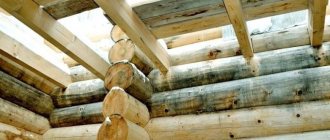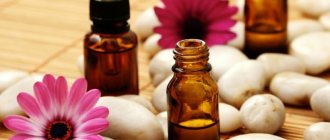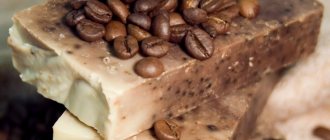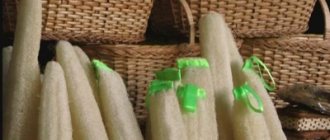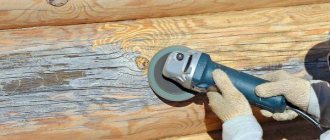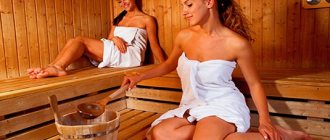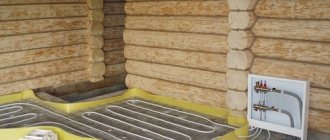Water bath: Instagram/sakhovskayayuliya A water bath is an indispensable way to heat food in everyday life. Without such technology it is impossible to imagine the work of most industries. Thanks to the water bath, we enjoy the taste of the most delicate confectionery products and have the opportunity to take care of our beauty and health. This is a modest list of the benefits of a water bath. For more information about what it is, in what cases it is used and how to set up a water bath with your own hands, read the article.
What does it mean to use a water bath at home?
This is discussed in our article. The key word here is “water”. Those. We heat the product or substance we need not with fire, but with water. The fact is that water boils at a temperature of no more than +100°C. At this temperature, the products that we need to heat in a water bath do not burn, they warm up more slowly and evenly, while retaining all their beneficial substances.
Honey, gelatin, chocolate, propolis, wax, paraffin, lard, soap are usually melted in a water bath. These substances are often used to prepare homemade masks and wraps.
It is also very good to brew herbs in a water bath; herbalists highly recommend this method of brewing as the most effective.
Therefore, if the recipe clearly states to melt or brew in a water bath, we strictly follow this instruction. How to make a water bath at home? What kind of dishes or pots are needed for a water bath?
There is nothing complicated here. Just take 2 pans of different sizes - larger and smaller. The smaller saucepan should fit completely, like a nesting doll, into the larger saucepan. By the way, instead of a large saucepan, you can use a basin or large bowl.
Instructions for use
Some experts recommend not only preparing folk remedies using a bath, but also heating food. How to heat food in a water bath? It's quite simple:
- Place a large saucepan on the stove, fill it with water about a quarter;
- bring water to a boil;
- Place the ingredients you need in a smaller diameter pan and place in a larger container with boiling water.
What does it mean to heat in a water bath and what is the advantage here? Food can be heated to a temperature of 40 to 90°C, depending on the intensity of boiling water. It is believed that food heated in this way is more useful than food that, for example, was prepared in a microwave, including because it eliminates burning and exposure to microwaves, the harmful effects of which are still debated to this day.
Article on the topic: How to gasify a bathhouse
Let's look at how this process works using the example of beekeeping products: honey, wax, propolis. Since it is with these products that people have the most difficulties.
How to melt honey
Crystallization of honey, or sugaring, is a completely natural phenomenon, which often indicates its quality. It is very inconvenient to use honey in this form in cooking or traditional medicine. To give this sweet and healthy treat an attractive and chewy appearance, use a water bath.
To do this, take the required amount of candied honey and place it in a container. As it heats up, watch how the crystals begin to “melt”. If you are not satisfied with the consistency, you can add a little water to the honey. Usually a few tablespoons are enough - the main thing is not to overfill.
By the way, this is exactly the method that unscrupulous beekeepers use when they want to dilute or pass off old and out-of-marketable honey as fresh. This way you can get tens or even hundreds of percent of additional profit. Read more about how to melt candied honey in this article.
How to melt wax
Wax is often used in cosmetology, handicrafts and folk medicine. It is used for hair removal, aromatic candles and art objects, and is used to treat joint diseases.
If you try to melt natural wax over a fire, it can easily burn. To avoid product spoilage, using a water bath is the only correct solution.
You need to work with wax very carefully. Not only can you easily get burned by the steam from the sauna, but melted wax also carries an increased risk of burns.
Take the required amount of wax and place it in the container you will use for the melting procedure. The wax should be stirred constantly until the desired consistency is achieved. Use it carefully but quickly enough for its intended purpose.
Article on the topic: How to deal with fungus and mold in a wooden house
How to melt propolis
Common in folk medicine, it is a resinous substance that contains about 200 substances useful to humans: flavonoids, aromatic acids, trace elements, vitamins. During storage, propolis begins to harden, and then completely turns into a fragile mass, similar to rosin. It is almost impossible to use it in this form - and here again a water bath will help out.
During heating, phytoncides begin to be released from propolis - substances that are effective in treating diseases such as bronchitis, rhinitis and other diseases of the lungs and nasopharynx. It is for this reason that propolis is often used for inhalation.
Some recipes require a liquid form, for example, for making medicinal ointments. Depending on the recipe of a particular folk remedy, butter or vegetable oil can be added to propolis.
Propolis begins to melt at a temperature of 80°C. Numerous studies have shown that even after boiling, the product does not lose its medicinal properties. But when preparing some medicinal products, propolis must be mixed with other ingredients - here the best option is to use a water bath.
It is recommended to heat propolis with the lid closed and it is better if it is made of glass - it is easier to control the melting process. After bringing the product to the desired consistency and adding all the necessary ingredients, it is recommended to strain the product through a sieve.
What else can it be used for?
Gentle heating of products is very popular in cooking, when there is a need to subject products to temperature treatment, which should not exceed 100°C. It is also used to prepare various creams, sauces and even cheeses.
In folk medicine, using this process, decoctions of medicinal herbs are prepared and ointments are made. This method allows you to preserve the maximum amount of nutrients and achieve the greatest healing effect.
Article on the topic: How to sterilize breast milk in a water bath
Water bath dishes
- What kind of dishes should I use for a water bath? As for a large saucepan (or basin), there are no special requirements, the main thing is that it be metal.
- A small saucepan can also be made of any metal, except when we are brewing herbs. To brew herbs, use enamel or glass containers.
Selecting dishes
How to heat in a water bath?
- It’s very simple - you need to put a wooden circle or a small plank on the bottom of a large pan.
- Then carefully pour water into a large bowl. This is a very important point. There is no need to pour too much water into a large saucepan.
- The water level should reach approximately halfway up the height of the small pan.
- Then we load the product we need into a small saucepan and cover with a lid. Where required by the recipe, add water to the product.
- We wait for the water to boil in a large saucepan, then reduce the heat to the temperature recommended in the recipe. Place a small saucepan in a large one. We warm up for the required time.
If you find it difficult to cook in a water bath using the method that we have described, we can advise you on special devices for a water bath at home, which are sold in the store. In particular, you can use an electric Herbalist to brew herbs.
And now more about how to heat various products in a water bath.
Advantages
In Istanbul, in the Sultan's Topkapi Palace, tourists are shown a medieval kitchen turned into a museum. Among the many huge cauldrons, pots and other utensils, there are also water baths. They prepared especially delicious dishes.
But you can also prepare real masterpieces at home.
The low temperature allows you to cook, for example, egg creams or sauces without destroying delicate proteins.
If necessary, the dish in the “bath” container can remain hot for several hours. You can serve it in portions, and the main part will always be hot, but will not burn.
How to melt honey in a water bath?
Honey has excellent anti-aging properties, so it is often included in anti-aging homemade masks.
But honey tends to become sugary and hard. You cannot apply solid honey to your skin or hair; it must be heated - then it will become liquid again.
Liquefying honey
To heat honey in a water bath, heat a large pan of water to a boil, then reduce the heat to low. Then put a small saucepan with honey in a large one with water. Stirring constantly, melt the honey in a water bath; as soon as the honey becomes liquid, immediately remove the saucepan with honey from the water bath.
Do not heat honey above +50-60°C. When heated at higher temperatures, honey loses all its beneficial properties.
Visiting the sauna for varicose veins
Unlike a Russian bath, where the conditions are optimal and well tolerated by the body, in a sauna the air temperature warms up to 110°C with a humidity of no more than 20%. This ratio of temperature and humidity is suitable for the prevention of a number of diseases. However, in the case of varicose veins, it creates an excessive burden on weakened veins and can provoke the formation of blood clots. Therefore, visiting a sauna with varicose veins, regardless of the stage of development of the pathology, is not recommended. The same applies to an infrared sauna. IR radiation involves prolonged (about 1 hour) heating of the body, which is strictly contraindicated for varicose veins.
Gelatin in a water bath
You can make luxurious face and hair masks from gelatin (see the list of recipes for gelatin masks here).
To prepare masks, we need liquid gelatin. And in stores it is sold either in powder form or in the form of plates. To make gelatin liquid, you need to dissolve it in a water bath.
Gelatin powder (or plates) must first be filled with water in a ratio of approximately 1 tbsp. l. dry gelatin for 2 tbsp. l. water. Mix everything. Allow to swell for the time indicated on the gelatin package.
Then put the swollen gelatin in a small saucepan and place it in a large saucepan with water. Bring water to a boil in a large saucepan, then reduce heat and melt the gelatin until liquid, stirring constantly.
How to brew herbs in a water bath?
As mentioned above, a water bath for brewing herbs is of the highest quality. For any infusions and decoctions of herbs, you should only use glass or enamel containers.
Prepare 2 pans for a water bath. Fill the larger one with water and let it heat up. Place the herbs or other plant materials you need in a small saucepan. Pour boiling water over the herbs at the rate of 1-2 tbsp. l. dry herbs for 1 cup boiling water.
Place a small saucepan of herbs in a larger saucepan of boiling water. Reduce the heat slightly and simmer the herbal decoction in a water bath for about 20 minutes.
Other popular methods
Other popular methods of organizing a water bath differ only in the home appliance used. So, you can do without a stove, but use:
- Microwave.
- Gas oven.
- Electric oven.
The principle is similar and involves the use of two containers (large and small) with water in the larger one. It is rational to use a microwave or oven to create dough, omelet, cottage cheese, cheesecake in a water bath. You can melt honey, create a herbal infusion, or even melt wax.
Cottage cheese in a water bath
- Kefir or curdled milk - 1 l
Preparation:
- If you decide to ferment the milk first, then add a spoonful of fermented milk product (kefir, sour cream, yogurt) and leave until thickened. Can be covered or placed on a radiator.
- If you use kefir, just pour it into a jar.
- Line the bottom of the pan with a cloth.
- The jar should be almost completely filled into the pan. Leave 5-7 cm above cold water.
- Place the pan over medium heat.
- Immediately after boiling, turn off the heat.
- Cover the saucepan with a bowl and leave to cool.
- Strain carefully. The original amount of liquid will yield approximately 200 g of cottage cheese.
Homemade cottage cheese
What problems does it solve?
Steam baths cope with various cosmetic defects.
Blackheads or comedones
Blackheads are a problem for many women and girls, especially with excessive sebum production. This is an element of acne that is formed by blocking the pores. It differs in that it does not have an inflammatory focus.
Divided into two types: black (open) and white (closed). They are absolutely harmless and are not considered a defect, but from an aesthetic point of view they cause a lot of inconvenience and complications.
Home cleaning will help to open the pores well and rid them of comedones without resorting to the services of cosmetologists. First, we wash ourselves with everyday products, then we carry out the procedure. The time ranges from 5 to 10 minutes, it all depends on the type of skin and the degree of contamination of the pores.
After this, use specialized sticks (wooden or glass) to remove dirt. The pressure should be light or medium, do not press until there is blood and wounds form, as they will subsequently heal and leave unsightly scars. Be sure to treat instruments with antiseptics, wash your hands thoroughly with soap and disinfect. This will serve as a preventive measure against the introduction of various microorganisms that can lead to purulent inflammation.
Once completed, enlarged pores must be narrowed. If you have a dry or normal type, then simply wash your face with cool water. For oily and mixed skin types, it is better to use special tightening masks and then wash.
Application of wound healing and nourishing creams is allowed. Do not use decorative cosmetics for two days.
You can cleanse your skin:
- dry – once every two months;
- normal – up to two times a month;
- oily and combination – up to four times a month.
Acne (acne)
Acne or acne is a problem that almost every person has encountered. The presence of rashes is a disease and in the absence of treatment and elimination of the causes that caused it, it can become chronic.
Acne is an inflammation of the sebaceous glands that occurs by clogging the pores and causing suppuration.
The reasons can be very diverse, ranging from adolescence, at the time of hormonal changes and ending with various malfunctions in the body.
In this case, steam baths help cleanse pores, improve blood circulation and heal wounds. The upper keratinized layer of the epidermis is removed, the skin is regenerated. After the procedure is completed, the face is lubricated with salicylic acid. Removing pimples with sticks is not recommended; there is a high risk that scars will remain in their place.
It is important to determine the cause of the rash and eliminate it. Because steam procedures are an aid
For greater effect, it is advisable to add herbs that have an anti-inflammatory effect. Before carrying out the procedure, consult a specialist.
Water bath for chocolate
We need chocolate not only for cooking, but also for our beauty. Chocolate, for example, can be used to make wonderful masks or body wraps.
For these purposes, we need chocolate in liquid form. To get liquid chocolate you need to make a water bath for it.
- First, break the chocolate into small pieces and then place it in a small saucepan. You can add a few drops of water to the chocolate.
- Then place a small saucepan with chocolate in a large one with boiling water, and, stirring continuously, bring the chocolate to a liquid state in a water bath.
Temperature increase method
In the varieties presented above, the temperature is increased with special devices. The steam bath is heated by water pipes that are laid under various surfaces of the room.
In other types of steam rooms, stoves can be used. They also differ in design and heating principle.
What types of sauna stoves there are should be considered in more detail. The steam sauna uses a brick indoor heater. Sometimes a metal stove lined with a stone casing is used. Metal types of heaters are used in dry and wet saunas. To prevent the temperature from dropping quickly, stones are placed inside the iron sheathing. They gain heat and release it into space for a long time.
Cream in a water bath
Protein cream can also be prepared in a water bath. It will even be a protein custard in a water bath, to be more precise.
Take:
- 3 raw proteins
- 150 g sugar
- half a teaspoon of citric acid
- half a packet of vanilla
Further:
- Whisk all ingredients thoroughly in a small saucepan.
- Place it in a large saucepan of boiling water. Make sure that their bottoms do not touch.
- Beat the cream in a water bath for 10 minutes until it becomes very thick.
- Remove the saucepan from the water and whisk the cream for a couple more minutes.
- The gorgeous white thick cream for the cake is ready.
Cream
Oil in a water bath
Heating the oil in a water bath is very simple. Take 1 kg of oil and do the following:
- Cut the butter into small pieces.
- Place the oil in a water bath for an hour and a half.
- We take the coagulated protein that will collect on top into a separate container. This is a great addition to porridges and pancakes. But its shelf life is not long.
- If the butter is not homemade, then it is better to throw away this protein foam. But there will be more benefits from a homemade product.
- After the specified time, strain the ghee from the sediment. This pure product can be stored for up to 10 months. And it will become a useful addition to your kitchen.
For therapeutic and cosmetic effect
An indication for the use of essential oil does not necessarily have to be any disease. There are oils that have disinfectant properties. Not only do they have a positive effect on humans, but also the wood, which is used to make furniture and wall cladding, also removes unpleasant odors. Such remedies include chamomile, eucalyptus, mint, and oregano.
Cosmetic properties of esters
Table. Cosmetic properties of essential oils
| Problem | What to use |
| Dandruff, dullness, brittleness, hair loss and other problems associated with hair and scalp | Oils of rosemary, santhal, lemon balm, and patchouli effectively combat the listed problems. |
| Swelling, itching after insect bites | It is recommended to use lemon balm and eucalyptus oil. |
| Acne, malfunction of the sebaceous glands | Lavender, lemon, and sage oil will help. |
| Aging skin | Rose and juniper oils have rejuvenating properties. |
| Dry skin | The problem will be solved by orange, jasmine, and patchouli oil. |
| General fatigue, pain syndrome | Eucalyptus, lemon balm, fir, juniper, basil, rosemary. |
rosemary essential oil
The following oils are used in aromatherapy:
- Natural aphrodisiacs - jasmine, rosemary, sandalwood, vanilla, bergamot create a romantic mood.
- Using rosemary and geranium oil, they stimulate brain activity, memory and ability to work.
- Grapefruit oil will help restore strength and vitality, and get rid of nervous tension.
- Fir and cedar oil will help you get out of depression and cope with neuroses.
- Jasmine helps you fall asleep gently, and orange oil helps you cheer up.
- Lavender oil helps get rid of irritability.
Essential oils can be mixed
Water bath for wax
Wax is a natural product that is included in many cosmetic products. But add it to homemade cream, mask, lipstick, etc. only available in liquid form. To acquire a liquid consistency, you need to melt the wax in a water bath.
A water bath is made for wax in the same way as for honey. Water is never added to wax. Stirs continuously.
Melt the wax
Action and contraindications
All this gives a cosmetic effect: the skin becomes softer and more pleasant to the touch. The face takes on a fresh and rested appearance, wrinkles become less noticeable. At the same time, the procedure also has a therapeutic effect - it helps in the fight against acne, blackheads and swelling.
Suitable equally for all skin types. However, its use is contraindicated in:
- dilated vessels;
- inflammatory processes not related to the activity of the sebaceous glands and blockage of pores;
- fungal infections and lichens.
People suffering from bronchial asthma and cardiovascular diseases during fever.
Lard in a water bath
Few people know that lard is a gift from nature for our beauty. It perfectly softens and nourishes the skin. Therefore, beauty recipes with lard are not a joke, but ideal care, especially for dry or rough skin.
But raw lard is not suitable for cosmetic purposes; it must be melted in a water bath.
- First, cut the lard into very small pieces - the smaller the better.
- Pour the lard into a small saucepan and place it in a large saucepan of boiling water.
- Reduce the heat slightly and wait until the lard is completely melted.
For what?
In all of the previously listed cases, it is necessary to use vegetable oil that has undergone proper sterilization. Then they need to lubricate the folds, scales on the head, as well as the area behind the ears, under the knees, elbows, armpits and feet. Maximum attention should be paid to the baby's dry skin. This is especially true for babies who were born post-term.
Attention! Remember that only a little oil is needed. If you take more than necessary, there is a risk of clogged pores. And the saturation of the body of newborns with oxygen occurs partially through the skin.

